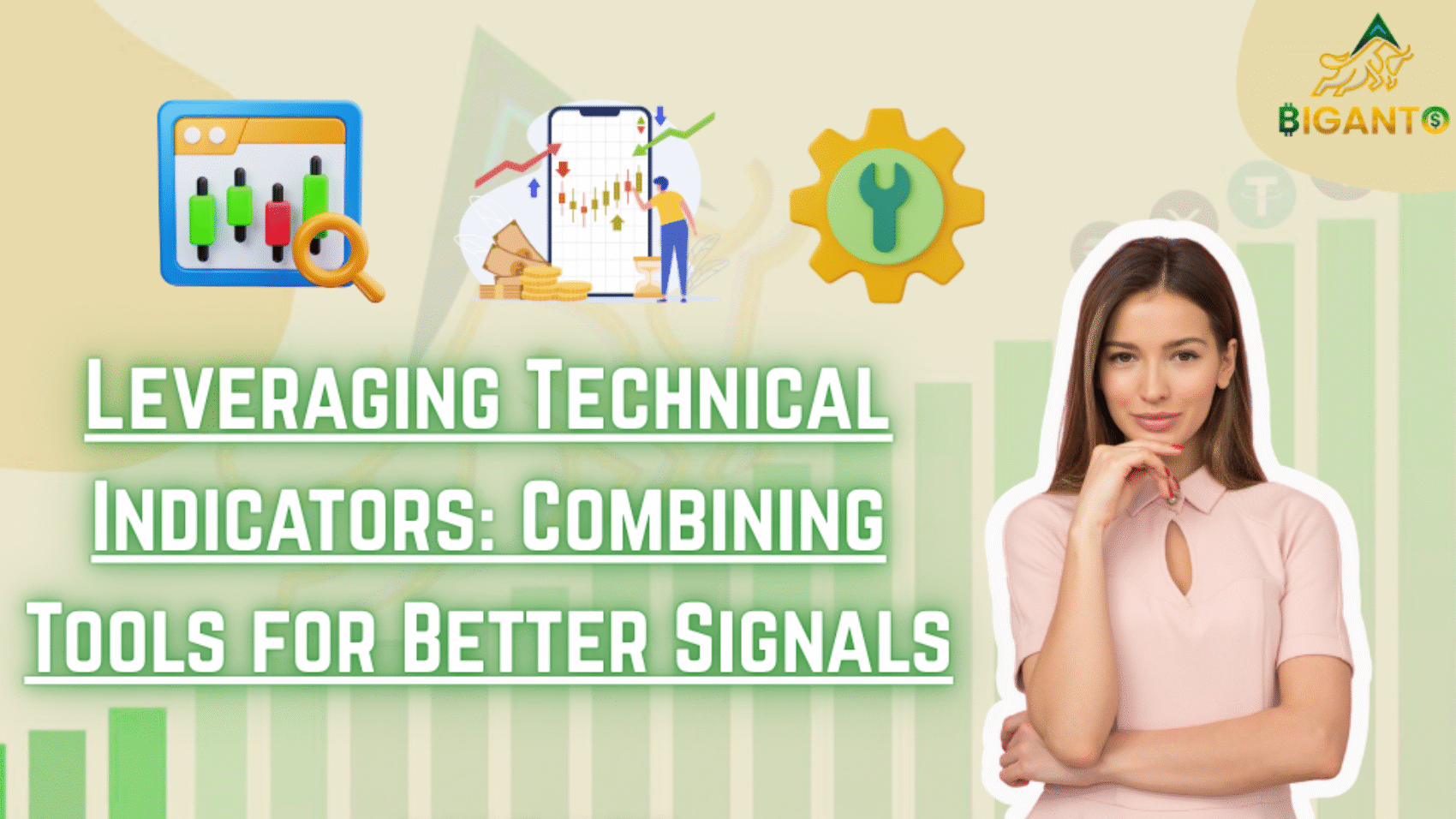Introduction
In the world of technical analysis, trading decisions are only as strong as the tools behind them. Relying on a single indicator often leads to inconsistent results or false signals. To improve accuracy and boost trading performance, traders can combine technical indicators in a strategic way to validate trends, filter out noise, and build stronger entries and exits.
In this article, we explore how to effectively leverage multiple technical indicators, understand their core functions, and develop a reliable system for generating higher-quality trade signals.
What Are Technical Indicators?
Technical indicators are mathematical calculations based on a financial asset’s price, volume, or open interest. These tools help traders:
- Identify market trends
- Gauge momentum
- Measure volatility
- Predict potential reversals or continuations
Indicators are commonly used in both manual and automated trading systems, particularly in forex, crypto, and stock markets.
The Value of Combining Indicators
Using a single indicator can result in overreliance on one type of data. No indicator works flawlessly in all market conditions. By combining tools that measure different aspects of the market, traders can:
- Confirm potential trade setups
- Filter out low-probability signals
- Strengthen the validity of entries and exits
This method is known as confluence trading, where multiple data points align to support a trading decision.
Categories of Technical Indicators
To effectively combine indicators, it’s important to understand the different types and what they measure:
1. Trend Indicators
These help identify the direction of the market.
- Simple Moving Average (SMA)
- Exponential Moving Average (EMA)
- Parabolic SAR
- Average Directional Index (ADX)
2. Momentum Indicators
These measure the speed or strength of a price move.
- Relative Strength Index (RSI)
- Moving Average Convergence Divergence (MACD)
- Stochastic Oscillator
3. Volatility Indicators
These provide insight into market fluctuations and potential breakouts.
- Bollinger Bands
- Average True Range (ATR)
- Keltner Channels
4. Volume Indicators
These assess the strength of a price move based on trading volume.
- On-Balance Volume (OBV)
- Accumulation/Distribution Line
- Chaikin Money Flow
Best Practices for Combining Indicators
Use Different Types for Complementary Insights
Choose indicators from different categories to avoid redundancy. For example, using both RSI and Stochastic (both momentum indicators) may offer overlapping information, whereas pairing EMA (trend) with RSI (momentum) provides a more balanced view.
Look for Signal Confluence
A trade setup becomes more reliable when multiple indicators align. For example:
- RSI is oversold
- Price bounces off the 200 EMA
- MACD shows a bullish crossover
This confluence suggests a stronger case for a potential buy setup.
Avoid Overcrowding
Too many indicators on a single chart can create confusion and conflicting signals. Stick to a maximum of two or three well-selected tools to maintain clarity and focus.
Sample Strategy: Combining EMA, RSI, and MACD
This is a classic combination that works well in trending markets.
- EMA (Trend Identification): Trade in the direction of the 50-period EMA
- RSI (Momentum Filter): Look for trades when RSI is below 30 (oversold) or above 70 (overbought)
- MACD (Signal Confirmation): Use MACD crossovers to confirm entry timing
This setup allows traders to identify high-probability trades with multiple layers of confirmation.
Enhancing Your Trading with Technical Indicators
Here are some additional tips for maximizing the effectiveness of combined indicators:
- Backtest Your Strategy: Use historical data to test how your chosen indicators perform over time.
- Adapt to the Market: Market conditions change; what works in a trending market may not work in a ranging one.
- Incorporate Risk Management: No setup is 100% accurate. Always use stop-loss and position sizing to manage potential losses.
- Use Price Action in Conjunction: Indicators are more effective when combined with candlestick patterns or support/resistance levels.
Recommended Platforms for Indicator-Based Trading
Several platforms offer robust tools for combining and testing indicators:
- TradingView – Highly customizable charting with a large library of indicators
- MetaTrader 4/5 – Ideal for forex and algorithmic strategies
- Thinkorswim by TD Ameritrade – Professional-level technical analysis tools
- Crypto Exchanges – Many offer built-in indicators for real-time charting
Conclusion
Combining technical indicators is a smart way to improve the quality of your trade signals. By blending trend, momentum, and volatility tools, traders can create more reliable setups and make data-driven decisions.
The key is not to overload your charts but to create a streamlined system where each indicator serves a distinct purpose. With proper testing and risk control, this approach can significantly enhance your trading performance and consistency.
Meta Description (for SEO):
Learn how to combine technical indicators to generate more accurate trading signals. Explore trend, momentum, and volatility tools for better market analysis.
SEO Keywords Used:
combining technical indicators, trading with RSI and MACD, technical analysis strategy, best indicators for trading, confluence trading method, trend and momentum indicators, how to read trading signals

